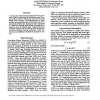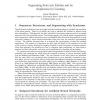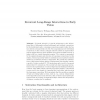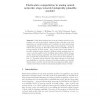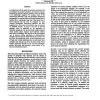118
click to vote
NEUROSCIENCE
2001
Springer
15 years 4 months ago
2001
Springer
During odour recognition, excitatory and inhibitory groups of neurons in the second stage of the locust olfactory system, the antennal lobe (AL), fire alternately. There is little...
133
click to vote
NEUROSCIENCE
2001
Springer
15 years 4 months ago
2001
Springer
Biological networks are capable of gradual learning based on observing a large number of exemplars over time as well as of rapidly memorizing specific events as a result of a sin...
113
click to vote
NEUROSCIENCE
2001
Springer
15 years 4 months ago
2001
Springer
: Recent research in brain development and cognitive development leads to an apparent paradox. One set of recent experiments suggests that infants are well-endowed with sophisticat...
128
click to vote
NEUROSCIENCE
2001
Springer
15 years 4 months ago
2001
Springer
Abstract. A general principle of cortical architecture is the bidirectional flow of information along feedforward and feedback connections. In the feedforward path, converging con...
132
click to vote
NEUROSCIENCE
2001
Springer
15 years 4 months ago
2001
Springer
Contours and surfaces are basic qualities which are processed by the visual system to aid the successful behavior of autonomous beings within the environment. There is increasing e...
188
click to vote
NEUROSCIENCE
2001
Springer
15 years 4 months ago
2001
Springer
Abstract. Finite-state machines are the most pervasive models of computation, not only in theoretical computer science, but also in all of its applications to real-life problems, a...
NEUROSCIENCE
2001
Springer
15 years 4 months ago
2001
Springer

